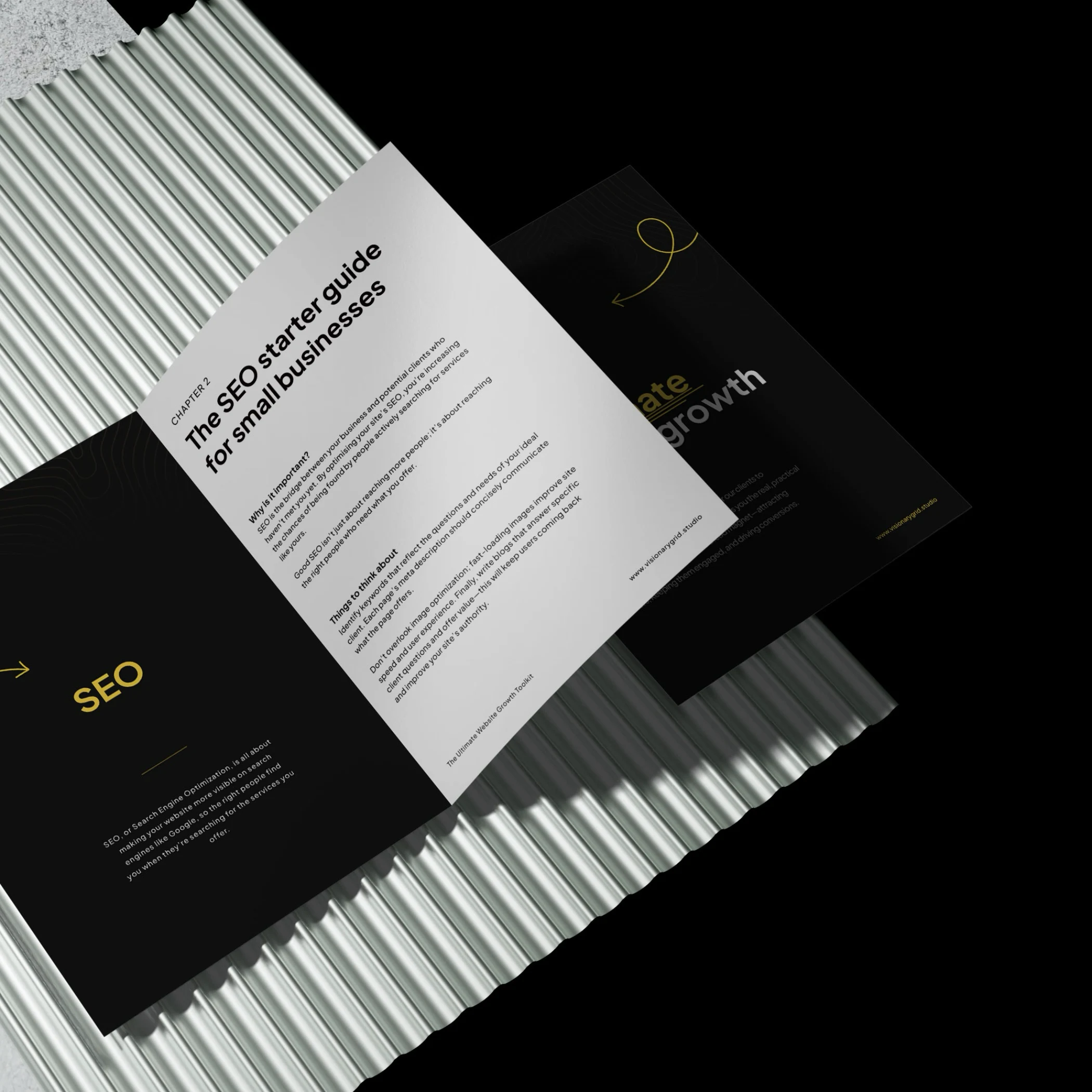How to Transform Your Website Into a Sales Engine (Not Just a Brochure)
June 16, 2025
1. 94% of first impressions come down to design
That's what people judge you on — instantly. They don’t read. They scan. And if your site doesn’t click in a few seconds, they’re gone.
2. Why most websites fail (and how to fix yours)
They’re built to look nice, not to perform. Most sites don’t clearly explain what the business does or who it's for. There’s no clear path for the visitor to take. CTAs are buried. The site takes too long to load. And honestly, the copy’s often just fluff.
The fix? Start with the goal. Is it leads? Demos? Signups? Design the site backwards from that point.
3. Your positioning has to be clear
Forget clever taglines. The first thing people need to know is what you do, who it's for, and how you help. If they can’t figure that out in five seconds, they won’t stick around.
4. Your homepage hero is everything
Use a strong headline. Make it about them, not you. Avoid generic stuff like “We build digital experiences.” Try something like “Websites built to attract better leads.”
5. Common homepage mistakes
- Talking about yourself first
- No real point of difference
- Buttons that say things like “Learn More” with no context
6. The best websites guide the visitor
They connect. They make you feel seen. And they show you what to do next without making you work for it.
7. Use a simple message structure
What do you do? Who is it for? Why does it matter? Put that front and centre. Use plain language. Don’t hide it in the About page.
8. Focus on benefits, not features
No one buys features. They buy outcomes. So instead of saying "Custom-built Webflow sites", say “Websites you can update yourself — without waiting on developers.”
9. Webflow gives your team control
We use Webflow because clients can update things easily without needing to call us. It’s fast, secure, and scalable. No plugins. No faff.
10. Your site should tell a story
It needs to hook attention, create interest, and show the value. Think of it like a sales pitch in scrollable form.
11. Show the before and after
Paint a picture. What problem does your customer have? What changes after they work with you?
12. Add real proof
People trust people. Use short, clear testimonials. Share logos. Include one or two results with numbers, if you’ve got them.
13. Use the conversion sandwich
Start with a clear headline. Then layer in proof. Finish with a strong call to action. Simple structure. Works every time.
14. Design isn’t just about how it looks
It’s about how it works. Design should help users focus, not distract them. Use contrast. Space. Directional cues.
15. Prioritise visual hierarchy
Make the most important stuff bigger and bolder. Guide the eye. Use white space to separate sections.
16. Keep your navigation clean
Use common page names like About, Work, Services, Contact. Don’t overthink it. You’re not trying to be clever here.
17. Place CTAs where people actually look
One at the top. One in the middle. One at the end. They should be clear, short, and action-driven.
18. Your service pages need structure
Start with the pain. Then the solution. Show proof. Answer objections. End with a call to action. That’s the flow.
19. Consistency builds trust
Use the same colours, fonts, and tone throughout. It shouldn’t feel like each page came from a different agency.
20. Nail your one-liner
One sentence. It should explain who you help and how. Put it on your homepage, your LinkedIn, your email footer — everywhere.
21. Only build pages that do a job
Every page should have a reason to exist. If it’s not helping someone move forward in the journey, bin it.
22. Don’t ignore mobile
So many people browse on their phones. Make sure the mobile experience is just as clear and simple.
23. Avoid endless scrolling
Break things up. Use jump links. Use sticky CTAs. Keep the page flowing without overwhelming people.
24. Speed matters
Slow sites kill trust. Optimise your images. Keep code lean. Ditch unnecessary animations.
25. SEO still plays a role
It’s not just about rankings. Good SEO structure helps humans too — clear titles, smart content, fast load times.
26. Talk like a real person
Drop the corporate waffle. Write how you’d speak in a meeting. Keep it natural and easy to follow.
27. Ask people who don’t know your business
Can a stranger understand what you do from your homepage? If not, it’s time to simplify.
28. Your website is your hardest-working employee
It’s selling when you’re not. So give it what it needs — clear messaging, strong design, and a strategy behind it.
29. Our process at VisionaryGrid
We use the 4Cs:
- Clarify your offer
- Craft your site and messaging
- Convert through design and flow
- Continuously optimise for results
30. Try our Website Stress Test
Get a free review of your site. We’ll show you what’s working — and what’s not. It’s simple, fast, and actually useful.
Want help turning your site into a proper sales tool? Get in touch. Or start with the free test and go from there.

Grab our PDF toolkit to transform your website into a client magnet
Are visitors coming to your site but leaving too soon? This toolkit has everything you need to make your website a client-generating powerhouse, from boosting visibility on Google to creating an experience that keeps visitors engaged and ready to take action.
Inside, you’ll get insights on:
- Improving SEO so clients find you first
- Designing a smooth user experience to reduce drop-offs
- Crafting clear, engaging messages that build trust
Get 5 conversion fixes you can ship this week
Free Loom. Fix List (5). Pitch-ready hero section. Delivered in 48 hours. No call.
Send me my 5 fixes (FREE, 48h)